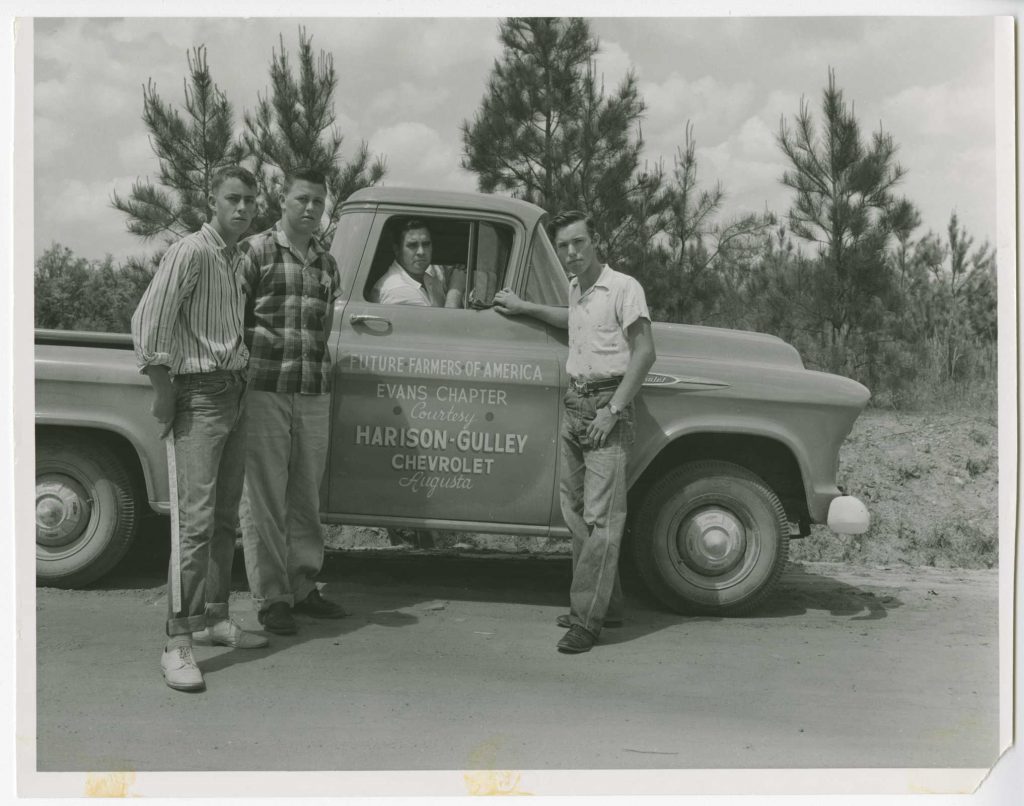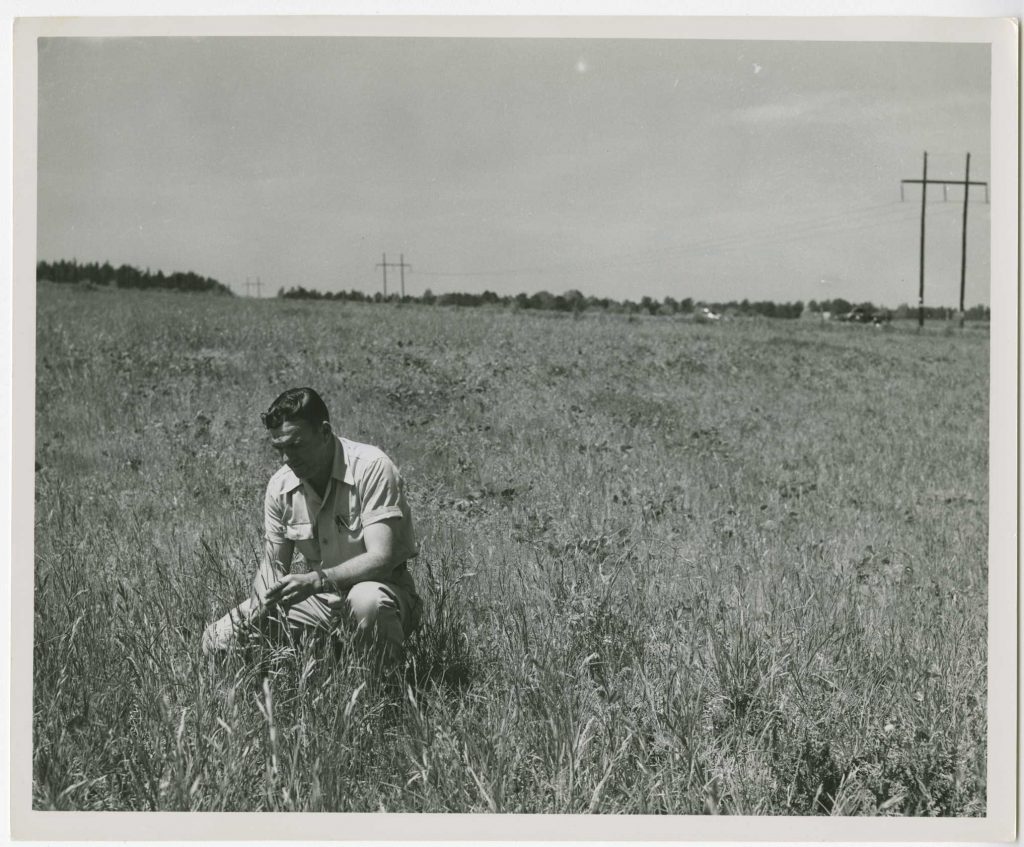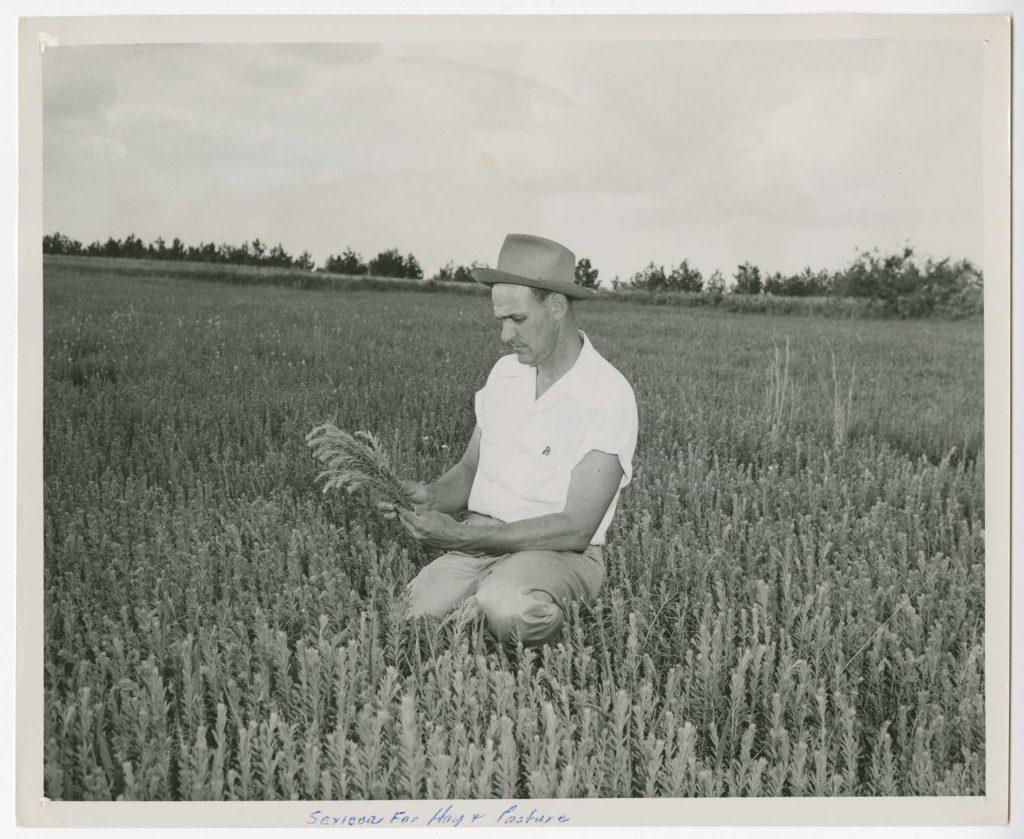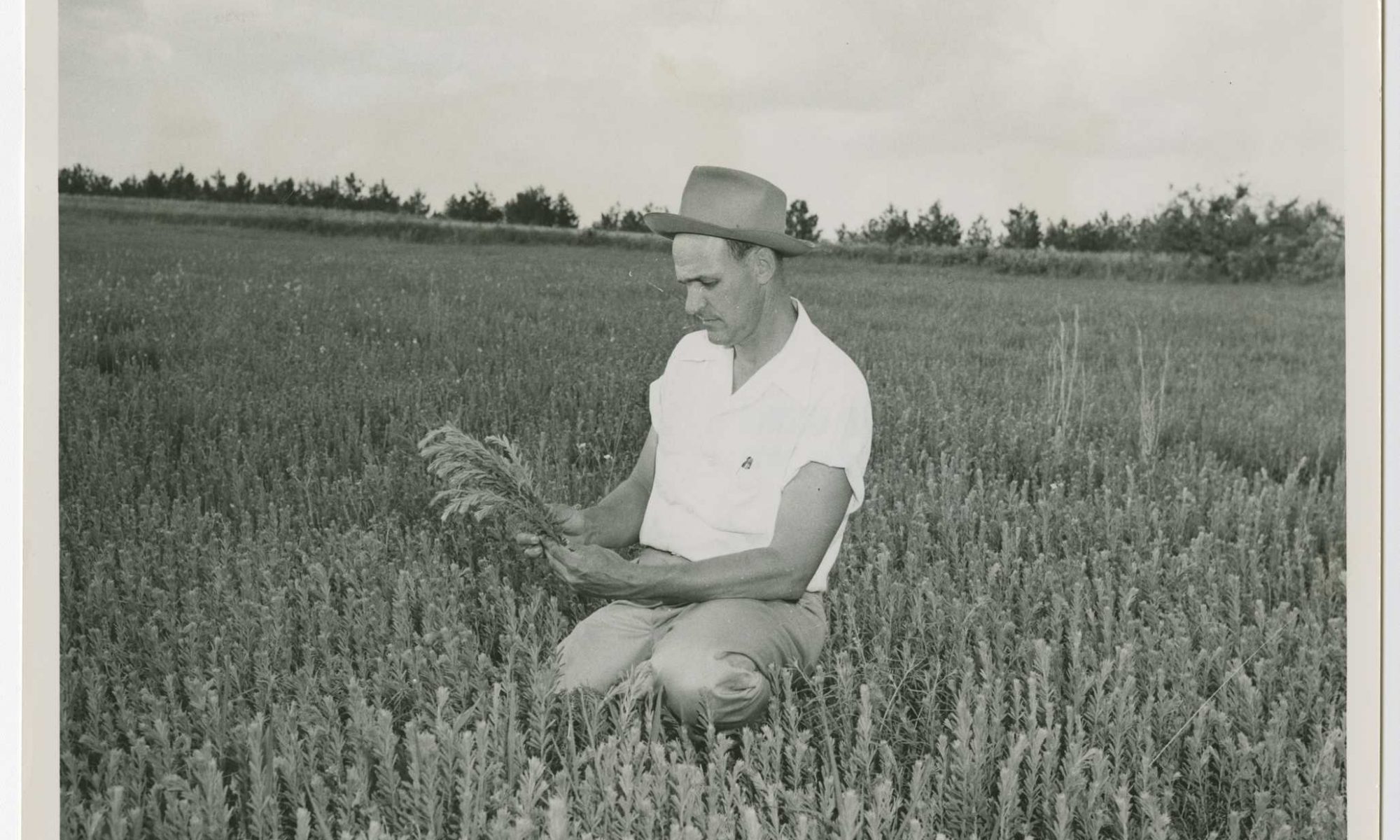This is the first in a series of guest posts contributed by our partners at HomePLACE, a project of the Georgia Public Library Service. HomePLACE works with Georgia’s public libraries and related institutions to digitize historical content for inclusion in the Digital Library of Georgia.
If you’ve spent any time in the Southern United States, you know kudzu by its moniker, “the vine that ate the South.” Indeed, a recently-published Southern Gothic story by J.D. Wilkes bears the same title. And yet the rise of the vine’s mythic powers in popular culture was foreshadowed by the United States Department of Agriculture’s concerted efforts to promote the plant as an antidote to soil erosion in the wake of Depression-Era dust storms.

Encouraged for use as a roadside planting by the Soil Conservation Service, the predecessor to today’s Natural Resources Conservation Service, kudzu thrived in the full Southern sun, undeterred by automobile emissions and undisturbed by grazing wildlife. (Though, as the Foxfire Museum and Heritage Center will remind you, the leaves are actually edible–like spinach!) It is in this context that the photos in the recently-released USDA Photo Collection, Columbia County, Georgia really come to life. Added to the Digital Library of Georgia in October 2017, the 70 Soil Conservation Service photographs document a variety of methods used by farmers, scientists and engineers to prevent soil erosion–including, of course, the planting of kudzu.
The collection, which was made possible through a partnership between the Digital Library of Georgia, HomePLACE and the Columbia County Library in Evans, Georgia, shows conservation practices in use during the 1950s-1970s. Mary Lin Maner, Director at Columbia County Library, notes that “Researchers who are interested in genealogy, agriculture, or the history of the region will be thrilled with the quality and scope of these resources.” The photos detail such practices as the creation of irrigation and drainage systems, windbreaks, rangeland reseeding, woodland harvesting, brush clearing, contour farming, and terrace construction. A few photos record Soil Conservation Service scientists surveying, sampling, and measuring soil conditions. There are also historic photos documenting conservation educational programs.

And of course, kudzu.
“Much of Georgia’s history is deeply rooted in the environmental and economic impacts of agriculture and farming,” says HomePLACE Director Angela Stanley. “While these photographs resonate locally for Burke, Columbia, and McDuffie counties, they also tell a larger story about the country’s changing relationship to sustainable farming practices, land conservation, and environmental protection.”
Of course, by the mid-1950s the USDA no longer publicly recommended the planting of kudzu as a method for curbing soil erosion or feeding cattle, and by 1970 the plant was listed as a weed. In 1997 kudzu was listed on the Federal Noxious Weed List. And the rest, as they say, was history: left unattended, kudzu spread rapidly–though not as rapidly as some might believe.
“In news media and scientific accounts and on some government websites,” writes Bill Smith for Smithsonian Magazine, “kudzu is typically said to cover seven million to nine million acres across the United States. But scientists reassessing kudzu’s spread have found that it’s nothing like that. In the latest careful sampling, the U.S. Forest Service reports that kudzu occupies, to some degree, about 227,000 acres of forestland, an area about the size of a small county and about one-sixth the size of Atlanta. That’s about one-tenth of 1 percent of the South’s 200 million acres of forest. By way of comparison, the same report estimates that Asian privet had invaded some 3.2 million acres—14 times kudzu’s territory. Invasive roses had covered more than three times as much forestland as kudzu.”
Despite these much more conservative estimates, kudzu still figures prominently in the Southern imagination. As the photographs in this collection show, however, the Southern agricultural landscape features more than simply carpets of vine. Plantings of nutrient-dense crimson clover, as well as rescuegrass, alfalfa, tree farms, and educational partnerships all played a part in the USDA’s efforts to stabilize and enrich the soil.

The images pertaining to Columbia County, Burke County, and McDuffie County, Georgia are part of a larger series of items that were taken throughout the continental United States and Puerto Rico and are housed at the National Archives and Records Administration (NARA), Records of the Natural Resources Conservation Service, 1875-2002, and series title, Photographs of Water and Soil Conservation Practices, 1932 – 1977. The digital collection provides data transcribed from captions for the original photographs that includes information about the subject pictured, the location and the date the photograph was taken.
The South can tell as many stories as it can keep secrets. But the hope is that, with a little sunlight, this new collection will inform our understanding of the agriculture, landscape, and mythology the South has grown up around.


